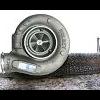I found a good cheap boost controller for $22!!!
Announcements
-
Similar Content
-
Latest Posts
-
Hi.. Just another problem. So maybe you can help. I(my mechanic) done swap from my RB20DE NEO to RB25DET NEO. Everything is OK but we have a boost cut. Coils/Plugs are ok...AFM is ok. ECU is ok. I have Walbro 255 but it "changed" sound few months ago(you can hear it ouside) you did not hear that when it was new(maybe faulty?) Sooo...what now? What can cause this boost cut? It is even when you standing still...
-
Not sure the US can import anything other than the C34 Stagea's, but if you can and you need to to tow, DO NOT under any circumstances get an M35 Stagea. If it is just as a family car and your country/state allows it, absolutely and definitely get an M35 (3.5L if possible as it is effectively a 350Z) over a C34.
-
Punch your VIN (nm35-xxxxxx) into Amayama.com You can see everything there quite easily.
-






Recommended Posts
Create an account or sign in to comment
You need to be a member in order to leave a comment
Create an account
Sign up for a new account in our community. It's easy!
Register a new accountSign in
Already have an account? Sign in here.
Sign In Now